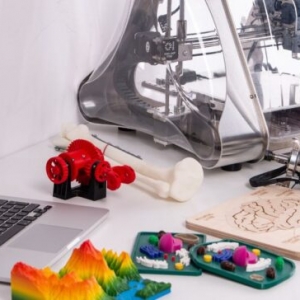The technology’s ability to reduce manufacturing waste, create customized products, and streamline supply chains has amplified its appeal. In tech hubs like Bangalore, Pune, and Hyderabad, a growing ecosystem of startups and businesses is exploring 3D printing services and product development, contributing to the country’s evolving technological landscape.
Despite the initial high setup costs, the long-term profitability prospects for 3D printing in India are promising, especially as demand grows and technology becomes more accessible. Local manufacturing incentives, skill development programs, and increasing global interest further position India favorably in the How to Make Money with 3D Printing.
How to Make Money with 3D Printing in India?
Understanding the Indian 3D Printing Landscape: India’s vast market, with cities like Bangalore, Pune, and Hyderabad fostering environments conducive to startups, offers numerous opportunities. The emphasis on domestic manufacturing and reducing import dependencies strategically places 3D printing in the business landscape.
Venture Opportunities in 3D Printing:
Prototyping Services: With India’s rapidly growing startup ecosystem, providing prototyping services for inventors, engineers, and designers can yield profitable returns.
Customized Manufacturing: The rising demand for personalized products allows 3D printing to effectively cater to niche markets, including jewelry and home décor.
Medical Applications: Tailored prosthetics, dental implants, and organ models for surgical preparation present lucrative opportunities in the healthcare sector.
Educational Aids: Utilizing the extensive academic network, creating 3D printed educational models can be a lucrative niche.
Offering 3D Printing Services:
Prototyping: Many industries require prototypes before full-scale production, creating a demand for services that produce initial models. b. Replacement Parts: Manufacturing hard-to-find components for various industries, from automotive to electronics, can be a profitable venture. c. Architectural Models: Collaborating with architects or real estate developers to produce scale models of buildings or landscapes is another avenue.
Selling Custom 3D Printed Items:
Personalized Products: Using 3D printing to create bespoke items such as jewelry, phone cases, or decorative art tailored to individual preferences. Specialized Tools and Parts: Developing tools or components for niche markets, like photography, automotive, or electronics, can find a market.
Cosplay and Collectibles: Designing and manufacturing items for fans, such as costume parts, props, or figurines.
Workshops and Training Programs: Organizing workshops, training sessions, or courses can cater to the significant portion of India’s population unfamiliar with 3D printing. With the government’s focus on skill development, collaborations and funding opportunities abound.
Tapping into E-commerce: Creating an online platform to sell 3D printed products or design templates can target a broader audience. Utilizing platforms like Etsy or India-centric ones like ShopClues and Pepperfry can showcase and sell unique 3D printed goods.
Investment and Costs: Understanding the required investments is crucial. While quality 3D printers for commercial use may be expensive, local manufacturing initiatives may soon reduce costs. Technological collaborations and joint ventures also ease access to sophisticated machinery.
Legal and Ethical Considerations: Navigating the legal landscape is vital, ensuring compliance with local regulations. Intellectual Property (IP) considerations are crucial in avoiding infringement on copyrighted or patented designs.
Networking and Collaborations: Networking is key to success. Collaborating with design schools, manufacturing units, or other startups can provide valuable business opportunities. Engaging in forums, attending tech conferences, or joining incubators offers a competitive edge.
The Road Ahead: India’s 3D printing market is projected to grow substantially. As technology becomes more affordable and awareness increases, the user base will expand. Urbanization, rising disposable incomes, and the emphasis on custom-made products create a favorable environment for 3D printing ventures. While challenges persist, particularly in investment and skilled manpower, the potential rewards are immense. Success lies in identifying niches, understanding the market, and continuous innovation.
For those ready to embark on this journey, India’s 3D printing landscape promises a path filled with innovation and profitability. The canvas is vast, and success is more than just a print away for those dedicated and passionate enough to paint it.





